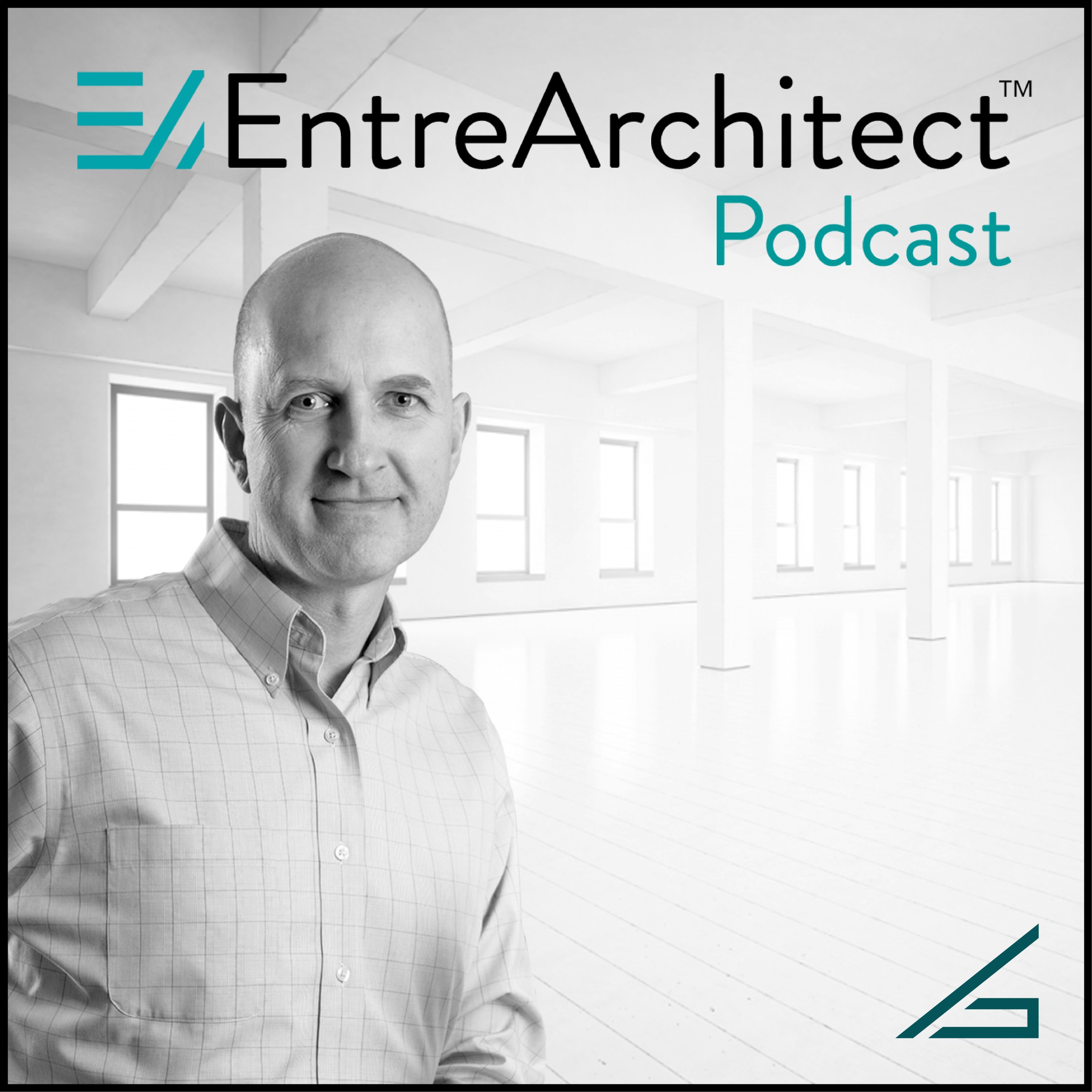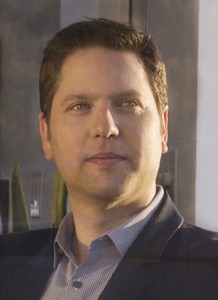
 Taking Action to Maximize the Value of the Architect with Ric Abramson, FAIA
Taking Action to Maximize the Value of the Architect with Ric Abramson, FAIA
Ric Abramson, FAIA has been in professional practice as a licensed architect for 28 years. He established his small firm, WORKPLAYS, in 2003. He’s taught for over 18 years on the faculty of Southern California Institute of Architecture (SCI-Arc) and USC School of Architecture. He’s been invited as a keynote speaker at the BIG Ideas Conference and has produced educational workshops around the country. He’s a small firm advocate, spearheading new California legislation protecting architects’ creative work.
This week on EntreArchitect Podcast, Taking Action to Maximize the Value of the Architect with Ric Abramson, FAIA.
Ric’s Origin Story
Ric’s story has been an organic process; he didn’t know he wanted to build things as a child. Looking back, he was always a “maker” of some sort, creating things and exploring. In high school, he was summoned to the counselor’s office to figure out what he wanted to pursue. His current class load and interests pushed him toward architecture school.
He earned his undergraduate degree at California Polytechnic State University, and his progression through the program created more passion for what he wanted to do.
His first job was with a small, well-established firm. It was a very old-school experience. That firm did primarily government work, but Ric stayed there for a year and a half before going to the next firm for 6 years.
After that, he attended UCLA for his Masters of Architecture degree and returned to begin a doctoral program. He was awarded a full ride scholarship to go study architecture in Italy. That had a profound effect on the course that Ric would embark on. After a year there, he came back, started his own firm, was offered a teaching position and has been growing ever since.
What kind of work do you do?
Ric does mostly residential work, with some commercial and consulting work. Lately they’ve been doing policy consulting in Los Angeles, California.
Like many growing urban areas, Los Angeles has a huge housing need. They’re looking for ways to be more innovative, integrating density and sustainable living. How can we house more people in closer proximity without giving up home ownership? WORKPLAYS responded to an RFP to write a new ordinance and design guidelines for a compact home ordinance in Los Angeles County.
Why did you move from design work to working with government?
Ric thinks it might go back to his Italian research roots. He was always fascinated with universal thinking, not only creating architecture, but the process by which it’s made and how architects fit into that role. Some of the control that architects once held has gone away, and that’s because architects aren’t at the table when housing policy is being made.
How can others get involved in policy-making?
There are so many ways to get involved. If you’re not already, get involved with a board, city commission, design review panels, etc. AIA National has a Center for Civic Leadership and a Citizen Architect Initiative, and they’ve been looking for those who want to get involved with making a difference in their community.
In smaller communities, go directly to your elected politicians and get to know them. Have coffee with your counsel member. Start to understand at a deeper level, how policy is made. Many elected officials aren’t experienced in land use, and many want to learn about it. Right now, the majority of the input comes from planning, community development professionals or private developers.
Relationships matter. We get caught up with the websites, marketing, blogs and everything else. The day to day, knowing the leaders, advocates and business entities in your community will help build relationships.
How can we change the conversation about the value of architecture?
We need to be able to communicate, in a very clear way, to the public why what we do matters. Ric has been working to explore a means by which the AIA would create a value index for new construction that could communicate to the public some things we do as architects that others don’t do because they don’t have the training. Scores could include measurables like energy efficiency, water consumption, building performance, sustainability, resiliency, and more. Architects can come together to measure the value in the things we do when we design. Assigning a measurable value to the work we do and comparing that to developed homes changes the conversation about what architects really do and why it’s valuable to homeowners.
What other ways can architects get out there and show their value?
The key for this idea is that it has to be flexible and scalable to local conditions. Architects need to figure out the key measurables in their local area.
Right now there’s a working group that Ric is the co-convener of. Contact him if you’d like to be a part of a national network of local architects who are passionate about creating a value proposition in their local area.
What is the influence of architects in society?
Ric is working with a local City Architect movement. In the formation of most American cities, there was a City Architect who was front and center with the planning and understanding of how a community would grow. Now, City Architects are few and far between. This person would be someone who was the visionary for the community, someone who would embrace the aspirations and goals, the sustainable and environmental interests and the cultural or social issues. How can we reinsert that person into the local government? Listen to this episode to learn more about how you can help promote the concept of City Architects.
Connect with Rick at info@workplays.com or online at WORKPLAYS.com. Also find him on Facebook and LinkedIn!
Visit our Platform Sponsors
Freshbooks is the easy way to send invoices, manage expenses, and track your time.
Access your free 30 day trial at EntreArchitect.com/FreshBooks. (Enter EntreArchitect)
BQE Software is designed specifically for architect’s project management!
Get a free 15-day trial at EntreArchitect.com/BQE.
ARCAT has huge libraries of free content, Specs, CAD, BIM and more. No registration required. Want to collaborate with colleagues in real time?
Visit EntreArchitect.com/ARCAT and click Charrette for more information.
Referenced in this Episode
Leave a Rating and Review at iTunes
EntreArchitect Academy Small Group Mastermind is for architects in Europe, the Middle East, or Africa facilitated by Katie Crepeau. Enrollment is limited to the first 10 members, so join today!

Our UK based work with the RIBA on the Value of Architects might be of interest.
I will forward your comment to Ric. Thanks for sharing.
I just listened to the podcast – this was a good one for us who also live and work in small towns but continue to think about the “big picture.” My family and I recently vacationed in Denmark and, knowing that they are at the forefront in terms of sustainability and general thoughtfulness, I wasn’t surprised in the least to learn that real estate listings have a section regarding both the quality of construction (the last time the roof was repaired, plumbing and electrical updates, etc.) and the energy efficiency (age and type of windows, average energy consumption, etc.). Those factors provide valuable information but, furthermore, that information is distilled into a simple letter grade, and thus gives the potential buyer a better idea of what the true value of that home is and will be going forward. I looked through a few homes and farms for sale and this time was surprised to see that those letter grades do affect the listing price. I was left with a simple “DUH” floating through my mind. Denmark is basically the size of Alabama, and I’m not knocking Alabama, but, that just goes to show you that they can move a bit more deftly, as a nation, to implement new policies due to their smaller size. I only say that because it probably needs to be done at a state level. Those experts and policy makers (hopefully includes Architects!) in that specific locale may enact standards based on that area. IE: Earthquakes in California, flooding in the midwest, water consumption and reuse in the southwest, and hurricanes in the southeast, etc. The model already exists and I’m sure the Danes would be willing to let us borrow it.
Great comment Sean. Thanks for sharing your experience in Denmark. I will be sure to let Ric know to check it out.